Erasure: The Essence of Creation
- Ranjan Kaul
- Mar 11, 2021
- 14 min read
Updated: Mar 12, 2021
by Ranjan Kaul
“Erasure” curated by artist Susanta Mandal is an absorbing and insightful exhibition with a noteworthy difference: the show is designed to invite viewers to engage with the process of creation and idea formation. Currently on display at Vadehra Art Gallery, New Delhi, the participating artists include highly acclaimed Indian artists – Anju Dodiya, Atul Dodiya, Sudhir Patwardhan, Gulammohammed Sheikh, Dayanita Singh, Ayisha Abraham, Mithu Sen, Ranbir Kaleka, along with Susanta Mondal himself.
Susanta was kind enough to give us a walk-through of the exhibition. He mentioned that he’d been thinking about doing the show for quite some time, but owing to the pandemic everything got delayed, which in a way was good because it gave the artists more time to work around the thematic concerns. He also said that as an artist he’d been working with different artists and curators for various shows in India and abroad and had been quite keen “to explore different nuances and possibilities of a show from the curatorial position.” He added, “It was mainly an initiative to work together with artists who I admire for their distinctive practices and I wanted to exchange ideas through this exercise."
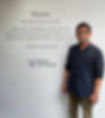
Susanta Mandal at the gallery
Donning the curatorial hat around the overarching thematic of erasure and to further this exchange of ideas, Susanta also invited creative practitioners from across disciplines – music, dance, theatre, medicine, architecture, education – in addition to the visual artists. This is something that interests me greatly. As I’ve earlier observed in my three-part essay on artamour (Sense and Sensibility in Contemporary Art), among various features that distinguishes contemporary art from modern art is that it has increasingly become inter-disciplinary and interactive and thus more engaging. Susanta has followed this welcome trend. According to him, for this show he was more interested in how ideas are formed and processed and hence the rationale to include an exclusive section devoted to “non-visual artists”.
When we enter the show, it is this parallel, discursive space dedicated to creators across other disciplines is what we first encounter. Responding to Susanta's request, the creative practitioners sent Susanta their personal contributions by way of thought and expression around the “erasure” thematic which he has now thoughtfully mounted in the show. These include texts, notes, drawings, images, videos, sound bites and other references that create an enriching off-centre to the explorations on the underlying theme.
Susanta says that the exhibition was triggered by two significant encounters: (i) the diary entries of British musician and composer Clive Wearing, whose short-term memory was reduced to under 27 seconds owing to a severe illness; and (ii) a newspaper article on the renaming of the railway station Mughal Sarai Junction in UP to Deen Dayal Upadhyay Station. Thus the insertions in the first room by the inter-disciplinary contributors draws analogies between two kinds of erasure – one that examines history as an ideological tool that selectively restructures and rewrites the past at will, and the other, the more clinical process of dementia as in the case of Clive Wearing. In one repeated postulation in his diary entries, Wearing writes the line ‘now I am’ followed by crossed-out text repeatedly to the extent that time loses its meaning, unhinging the present to merely float without context.
Among these insertions is also a poem by dancer Rajyashree Ramamurthi, which she sent with a covering note; that too is pinned to the poem around the theme but has been deliberately diffused as part of the curatorial exercise. In her note to Susanta, she explains that she wrote the poem after her mother died and specifically mentions a character Chihiro who is the protagonist of a Hayao Miyazaki film called Spirited Away. She adds that the poem is something between a poem and a tale and because she rewrote it several times, this never-ending process of retelling and refining the narrative she felt connected with erasure. Here is her untitled poem which too interestingly revolves around the theme:
In the days after you died, I saw your face Towering — as big as the tall buildings all around me.
You laughed and laughed Like the spirit Chihiro helped cleanse and release.
Fetid trauma had finally been pulled free. You shed that fragile body — The rigid form that had persisted so obstinately with a mysterious, tireless desire to exist — And took flight.
Now — months later I can still hear your laughter echo. And though your face fades, I feel your love whole.

Submission by dancer Rajyashree Ramamurthi

Fragmented City by Swati Janu
Dance practitioner and choreographer Mandeep Raikhy writes about how the idea of “erasure” is deeply embedded in the history of dance in India, particularly such as Bharatnatyam and Kathak and how according to him in the first half of the twentieth century, a chunk of the history of Indian dance was deliberately erased in order to 'reform' the dance. He laments that “by taking these dance forms away from the hereditary communities that performed and owned this dance, sanitizing them of all sensuality and making them more acceptable to Brahmanical morality, this upper caste take-over of dance is one of the most brutal erasures that history will ever witness”.
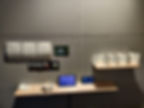
Installation view of the inter-disciplinary submissions
There are a host of other equally interesting insertions in the show including architect Swati Janu’s Fragmented City, and a handwritten letter (that forms a concept note for a video) from a resident of a village in Mynmar submitted by architect and curator Sayantan Maitra Boka that talks of the woeful condition of the village that lacks basic amenities like electricity and medical facilities and how the village is forgotten, erased from the world map as it were.
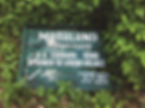
Maraland by Sayantan Maitra Boka

Maraland (concept note) by Sayantan Maitra Boka
The other expressions include a display created by Anupama Srivastava and Anirban Dutta that transitions from simple algebra to machine language using the binary system and another showing fading digital long loops by artist and film maker Babu Eshwar Prasad, that evokes a sense of collective dementia. Finally, I’d like to mention the submission by the only “artist” in this section, Sudhir Patwardhan, who submitted his initial drawings for his painting titled Eviction that is discussed later in this review, which gives us an inkling into an artist’s mind, and how an idea gets translated into a more finished work.


Viewing the inter-disciplinary submissions
Anju Dodiya is well known for her subtle aesthetic sensibilities that she imparts to her works with poignant figurative images, often with female protagonists and autobiographical narratives. Bold patterns and vivid colours of Medieval French tapestries and Japanese prints have also influenced her expressive works using symbolism-suffused watercolours. In this show she experiments successfully with archival prints mounted on lightboxes as she rediscovers the translucent bleeding colours of her own earlier creations. Through her unpredictable explorations around the concept of erasure with partial deletions, staining or blurring of the face or figure, she renders the illuminated works a spontaneous joyfulness and an exquisite aesthetics. While a Circle of Fog envelops the face in one work like the peeled skin of a fruit or vegetable, layers of woollen garments leaves the face only half covered in her work titled Winter Portrait. On the other hand, Night Garden is more self-introspective and dream-like, perhaps evocative of the emotional need to escape the experience of the forced isolation of lockdown.

Display of the works by Anju Dodiya
(All are archival prints mounted on lightbox in the same size (15" x 11.5" x 3"))
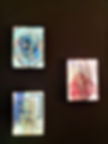
From top: Circle of Fog; Winter Portrait and Night Garden by Anju Dodiya
Atul Dodiya is one of India’s foremost contemporary artists and needs little introduction. Spanning a long and distinguished career that has won him international acclaim, his art practice has spanned portraiture on easel painting to installations that have continually stretched the boundaries of imagination. While his works include figurative, symbolic and mystical elements, he has worked around Gandhi as a thematic and commented on social events, borrowing freely from literary and allegorical references. His solitary work included in the show titled Mystic/River includes a Gujarati poem by the well-known Indian poet Labhshankar Thakar in the backdrop – while the blurred rendering of the words of the poem evokes the thematic of erasure, the poem itself given here in English translation makes the work more self-explanatory:
A voice comes from behind, imagine. There’s darkness behind, imagine. Imagine behind, imagine ahead. Imagine being. Imagine as you can, Imagine as you do.
Imagine as you can hear. Imagine you can understand. Imagine what you hear.
A voice comes from behind, In the darkness, Imagine.
The date for the work given in the gallery caption is 2019-21 – presumably then the work has been in the process of creation over a long period and was completed only recently during the pandemic period. A mysterious river flows solidly down with a gaping blackness like a tree hollow merging with the half-seated figure who imagines the “darkness behind”. He stares in front to “imagine ahead’ even as the poetic voices echo behind calling him out to “imagine being”. The sombre colours, the lonely contemplating figure and the blurred and unfinished treatment all together contribute to the sense of erasure, while perhaps reflecting the dark moodiness of the artist owing to the forced isolation of the lockdown.
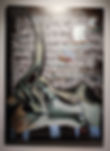
Mystic/River by Atul Dodiya
The pairing of the Dodiya couple in the same room is curious and engaging in that the works evoke contrasting emotions. Here I must compliment the curator Susanta Mandal for providing adequate breathing space to the works with sufficient distancing from each group of artworks of the respective artists – something we seldom get to see in gallery spaces. The lighting too is done aesthetically with utmost care and thought, making for an ideal viewer experience.
Installation artist and short film-maker Ayisha Abraham uses footage of old 8 mm film and, rather than cleaning up the fungus that has grown on the film with age, interestingly, chooses to retain the fungus as the central element of her narrative. The fungus feeds upon and grows on the burnt moving images creating its own identity. The film fragments are seemingly disconnected but have the implicit connecting narratives that recall old memories. The work compels us to consider the fragility of human lives and our inevitable aging and deterioration with the growing fungus alluding to the time gone away and that we too will slowly get extinguished. The display on the wall alongside gives a semblance of the editing process of the footage done with apparent arbitrariness.
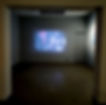
En route or Of a Thousand Moons by Ayisha Abraham
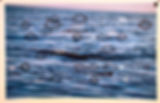

Widely acclaimed Indian photographer Dayanita Singh dons a photographer-artist hat with her works titled Ash Grey 2 & 3 which include black-and-white images mounted on aluminium sheets with a light coating of ash-grey coloured paint. Through this simple yet effective intervention, she dramatically bring about a transformation to the works as alternate constructed images of the original photographs under the obstructing veil of the thin coat of paint, thus opening up new revelations and cognitive perceptions. While the experiment successfully conveys the erasure thematic and are equally aesthetically pleasing, the works didn’t really resonate with me – I’ve seen far more evocative and portrayals by the talented photographer that have greater impact.

Ash Grey 2 & 3 by Dayanita Singh
Gulammohammed Sheikh is one of India’s senior-most artists who has painted rich, representational narratives of social spaces that rather than being overtly political or comment on xenophobia or communalism captured the multiplicity of Indian culture and cosmopolitan urban living. Many of his works are suffused with colour, drawing upon art history and direct autobiographical experience. At the same time, the artist has also had a long-standing interest in the complexity and contradictions in map-making and cartography and has been strongly influenced by medieval maps of the pre-Enlightment era which get reflected in the two thought-provoking complementary works on display. He draws narratives of colonial legacies and sectarian violence and the pervading ethos surrounding ethnicity and strident nationalism. Thematically closely connected, the works on display too confront us with our plural identities and ask difficult questions around identity and humanity at large – erasing the inheritance of history of artificially created human borders, he re-imagines the world map as arenas of conflict and plural identities.

Unresolved Erasures by Gulammohammed Sheikh
The two complementary works on display are more monochromatic water colours as contrasted to his earlier more colourful works on canvas, Unresolved Erasures shows a neatly execute circular cut representing the globe with the land boundaries; superimposed on the map are multiple images rendered as line drawings from historical references including from art history – a representation of Rodin’s The Thinker and an identifiable Picasso image. The small but complex work also includes a falling figure; a retreating figure of Gandhi supporting himself on the shoulders of his trusted women “walking sticks”; a man going through the motions of milking, a reminder perhaps of the neglected rural habitat; a seated figure on a throne, perhaps harking back to the days of royalty and kingdoms and India’s colonial history; pavement dwellers; a protesting woman with raised arms reminding us of the nearly forgotten Shaheen Bagh protestors that seem to have been nearly erased from our minds. All these etched drawing are juxtaposed with unrecognizable forms and deep fissures, perhaps alluding to the creation of artificially created national boundaries that remain unresolved through successive generations of history.

Undying Erasures by Gulammohammed Sheikh
His second related work Undying Erasures has a glowing amorphous central earth and again includes line drawings in reverse. The protesting women of Shaheen Bagh again find a presence while most the remaining figures depict poignant scenes of migrant workers wearing masks on their way home following the sudden lockdown. The interplay of dark and light hues of brown and soft magenta accentuate the sombre thematic and serve as testimonies that these social issues will neither die or get fully forgotten even as polity and and a self-serving society may like it so.

Ripped Base and the Insuperable Span (still photo) by Ranbir Kaleka
Like Gulammohammed Sheikh, Ranbir Kaleka is another contemporary Indian artist who engages with viewers using moving narratives that invite them to reflect on social realities. However, while Sheikh uses traditional drawing and painting, Kaleka makes uses of his proto-cinematic practice. Ripped Base and the Insuperable Span features projections on two canvases on the sides and a back brick wall carrying moving images of a man and a girl child (perhaps his daughter) and images in archival ink. The man and the girl initially occupy their own frames kept apart by a deserted city street, a possible reminder of the forced distancing that has come in the wake of the pandemic. As the projection opens and the images become more distinct, we see the girl walking out of her painted frame to transition to reach the man and embrace him by the waist but he soon fades away – he was really not there and this was only her wish-fulfilment. Next, the narrative reverses with the man now going across to embrace the girl but she too, not unexpectedly, also disappears into the shadow. The narrative continues through day and night and changing weather conditions to indicate passage of time as the world continues its routine living oblivious of individual fates. The liminal, dream-like images tracing the unfulfilled desires of in the imagined world of the two protagonists is evocative of how people across all sections of society have suffered from lack of physical contact during the ongoing pandemic. At the same time, it is also a poignant commentary on situations of migration that separated parents from their children. It is my view that the four-minute work, though intensely emotive, is a trifle long and could benefit from some editing to perhaps “erase” somewhat repetitive elements!
Ripped Base and the Insuperable Span (video, partial clip) by Ranbir Kaleka
Mithu Sen is a versatile and brilliant artist who works with a variety of media to explore and subvert hierarchical codes and rules in society that sustain myths in relation to sexuality, art markets, language and marginalization. Through her works she exposes these myths and challenges accepted standards of social exchange through clever interventions and satirical artistic devices. Defacing and “blackening her past works to evade censorship” using decorative motifs and to find acceptance in the disturbing trends in contemporary society, her trio of works on display titled (A) Politically Black is a severe indictment of what constitutes political correctness and appropriateness in today’s problematic art market and xenophobic society (where she even resorts to deliberately blacken out certain terms even in the captions and an accompanying statement). While this overt self-censorship connects strongly to the thematic concerns of “erasure”, the use of blackening itself makes a powerful statement. The black and dark colours of the palette to my mind also opens up the works for interpretation in relation to racism and dark skin prejudice.

(A) Politically Black by Mithu Sen

(A) Politically Black (statement) by Mithu Sen
Sudhir Patwardhan is a popular self-taught artist and a former radiologist by profession. Known for his near-realistic figures and stylized cityscapes, he capture the moment in the lives of the protagonists. The two works on the display are in many ways are a continuation of his oeuvre as a storyteller. In Eviction the central figure appears to be have paused during the frenzy of packing. He peers into his trunk closely, looking for a forgotten object perhaps, something that an old memory has triggered. Or is he searching for something more germane, his identity; a reference to CAA/NRC perhaps (or is that too much of an imagination stretch), the lack of it being the reason for his being thrown out of his abode. An older member of his family lies on the ground in no hurry to move while a dog barks at the bridled horse of an unseen tonga, obstructed by a mass of blue and the stylized square-edged awning of the home that he’s to vacate now. The prominent white stationary horse is almost surreal, symbolizing the deep inner desire to stay back and mirroring the psychological portrayal of the protagonist. Patwardhan is well known for his use of bright captivating colours; while the yellows and orange on the ground convey the time of day and perhaps he uses them to contrast with the more sombre colours of the distressed protagonist, I did get the feeling that they are unnecessarily loud and come in the way of what could have been a more harmonious composition. Similarly, I thought the white horse is far more prominent than really required.
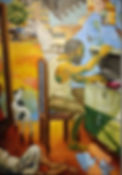
Eviction by Sudhir Patwardhan
The sombre mood of the protagonist carries over to his second work Distant City as the artist responds to the concern of migrant families walking long distances to their villages after abruptly announced lockdown. With only an electricity tower to serve as a reminder of human habitat, the otherwise barren and deserted landscape of unknown lands, the dark foreboding clouds, the hot, blazing orb of the surreal sun portends an uncertain future. A figure with a backpack looks behind, unable to erase the distant city from his mind. Here the colours are more sober with the woman in orange the only brighter hue to balance the exaggerated yellow of the sun.

Distant City by Sudhir Patwardhan
Susanta Mondal is an innovative conceptual artist, who originally trained as a painter but branched out into doing more installation-based works placed in interactive elements that invite viewers to confront social events. He often uses lighting devices and cinematic projection construing unsettling images through the created chiaroscuro. It’d be not out of place to mention that he was the first artist to be featured on artamour. Responding to the artamour questionnaire in October 2020, he told us about his fascination with projection systems and his early inspiration to work with them: “For the last couple of years, I’ve been engaged with a few sculptural works inspired by what has come to be known as the ‘magic lantern’ – a projection device that came in vogue during the Victorian period. With simple mechanics, lenses, an oil lamp and hand-painted slides, it gave immense aesthetic pleasure to the people in the 19th century. I’ve tried to bring the old technology to our times, albeit in a different manner.”
Even if I Forget . . . (video, partial clip) by Susanta Mandal
In his innovative work on display in Even if I Forget . . . Mandal uses a simple projection device using convex lenses that is enabled with an automatic microcontroller to project short scripts and notes recreated from remembered film sequences that he watched during the lockdown to trigger a cognitive chain among the viewers. He uses a specially designed piped apparatus to clean the final lens piece by water on completion of each cycle, to erase as it were, one memory before the new one is projected. Finally, we have a curtain as in a theatre that rises and falls at the start and end of each act. The invented device is not hidden and kept open for exploration for viewers as we see with fascination how the original script gets digitally transformed. In doing so, he ensures that erasure does not fully take place even if the hand of time wears out memory.
Artist Susanta Mandal explaining the construction and concept of Even if I Forget . . . (left)
Display on the wall of the kinetic installation (right)
The entire exhibition is indeed an enriching experience and I would like to again commend Susanta Mandal for having conceived the project and executed it so meticulously and of course congratulate the artists and the creators from other disciplines as well who submitted their works. Vadehra Art Gallery too needs to be complimented to take on projects like these that give space, freedom and support to such curatorial efforts. It is rare to see the formation of ideas as we view in the show and how these are in response to a range of fluxes and events. We experience the process of creation, from assimilation and alienation to aggregation and erasure. We appreciate the dilemma of artists such as Mithu Sen who feels compelled to self-censor in the difficult times we live where freedom of expression cannot be taken as given and feel compelled to use subterfuge to make her statement. So while some editing and erasure takes place intentionally and voluntary in the process of creation, we understand that other acts are involuntary and more dictated by circumstance and the prevailing toxic climate. The exhibition thus is a celebration of freedom of expression and how the work of artists and creators cannot be easily undermined or erased.
The exhibition will remain open till 2 April 2021.
(All images and videos of the artworks are courtesy of Vadehra Art Gallery and the respective artists, taken by Aakshat Sinha in the gallery.)

Ranjan Kaul is an artist, art writer, author and Founding Partner of artamour.




